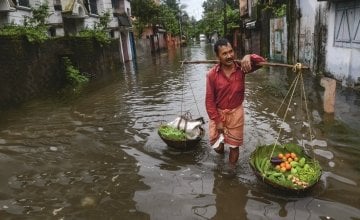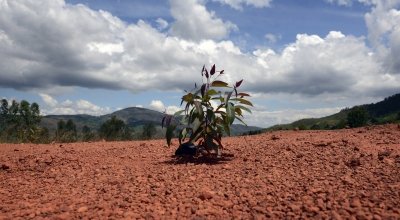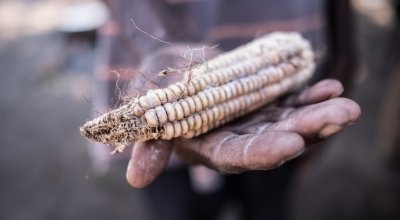
Knowledge Hub
Can we feed the world and save the planet?

For several decades hunger levels have been reducing globally. Yet, the last few years have seen an increase in the number of people going hungry, driven largely by conflict and climate change.
The 2019 Global Hunger Index (GHI) which we are launching today, reports that the number of hungry people has risen from 785 million in 2015 to 822 million in 2018, with multiple countries with higher hunger levels now than in 2010. Hunger classified as at alarming levels exists in Yemen, Chad, Zambia, Central African Republic and Madagascar. And there are more countries where hunger is widespread, but where detailed data is unavailable, such as Congo, Somalia, South Sudan, Burundi and Syria.
We are off track to meet Sustainable Development Goal 2, to end hunger and malnutrition in ten years, with around 45 countries set to fail to achieve low levels of hunger by 2030. This is being driven principally by conflict and climate change.
Climate change as a driver of hunger
Climate change, agriculture and nutrition are interconnected. Climate change will impact on food production, its nutritional value and price, and increase the amount of food wasted. Increases in temperatures and droughts will result in decreasing crop yields and livestock productivity. The increased frequency of extreme weather disasters which we are already experiencing can contribute to rising food prices and jeopardize peoples’ access to food. Overall, climate change will worsen food insecurity and restrict access to the diverse diets that humans need to survive and thrive, hitting the most vulnerable – who have contributed least to global emissions - first and worst.
Food systems as a driver of climate change
The relationship between climate change and food cuts both ways. Food systems contribute an estimated 19-29% of greenhouse gas emissions, mostly from agricultural production. This leads us to one of the fundamental questions of our lifetimes: how can we provide a nutritious diet to a global population growing to 10 billion people, whilst protecting the environment and limiting climate change?

A challenging future
According to the World Bank, at 2°C of warming, between 100 and 400 million more people will be at risk of hunger - and we are currently on track for more like 4°C warming. Medium to high levels of climate change are expected to result in an additional 4.8 million under-nourished children by 2050 (IFPRI, 2017). And if the Sustainable Development Goals are not met by 2030, climate change could force more than 100 million people into extreme poverty.
So what on earth can be done about it?
To limit the worst impacts, the world will need to take urgent action to make transformational changes to our energy, land, infrastructure and industrial systems. At the same time, we need to address urgently the immediate and underlying drivers of malnutrition. Climate change mitigation and adaptation measures need to be combined with safety net polices that protect the most vulnerable from food insecurity.
But the clock is ticking. We have just 10 years to reach SDG2, and global CO2 emissions need to be halved by 2030 to avoid climate chaos. However, next year presents an opportunity for the world to get back on track to tackle hunger and climate change. In 2020 governments meet in Japan at the Nutrition for Growth summit, an important process started by the UK Government in 2013. Later that year, the UK hosts the 26th instalment of the UN climate change negotiations process, another opportunity to galvanise global action on climate change. Both events provide a crucial opportunity for governments from around the world to turn rhetoric into action and make the commitments and investments needed to tackle hunger and climate change.
The UK’s role
The UK government has a critical role to play. The UK Department for International Development must keep its focus on supporting the poorest and most vulnerable, maintaining its critical investments in health and nutrition, social protection, education and adapting to climate change – the things we know will benefit the poorest most. This focus and a conscious effort to reach those furthest behind first is fundamental to achieving the SDGs.
Join the debate
We know individual and collective action is needed by governments, business and citizens to tackle malnutrition and climate change. Our experience tells us we also need to go beyond increasing food production and address gender dynamics, behavioural norms, health and sanitation to improve nutrition of the poorest. But we don’t have all the answers. So we will be hosting a discussion bringing together nutrition and climate experts alongside a UK Minister in London on 17th October 2019. It’s open to all, just click here to register.
Other ways to help
Donate now
Give a one-off, or a monthly, donation today.
Join an event
From mountain trekking to marathon running, join us for one of our many exciting outdoor events!
Buy a gift
With an extensive range of alternative gifts, we have something to suit everybody.
Leave a gift in your will
Leave the world a better place with a life-changing legacy.
Become a corporate supporter
We partner with a range of organisations that share our passion and the results have been fantastic.
Create your own fundraising event
Raise money for Concern by organising your own charity fundraising event.





